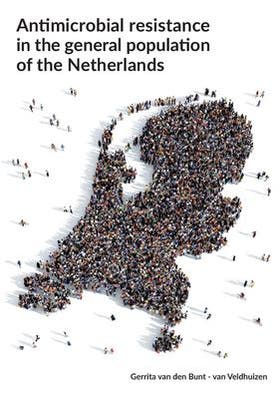Gerrita Veldhuizen
Antimicrobial resistance in the general population of the Netherlands

- Datum
- (Co) promotoren
- 19-09-2019
- prof.dr. M.J.M. Bonten, dr. A.C. Fluit, dr. W. van Pelt
Samenvatting
Antimicrobial resistance is worldwide common in humans and animals and is a public health threat. Bacteria (Enterobacteriaceae) producing ESBL (Extended-spectrum Beta-lactamase) or carbapenemase received lot attention in recent years because these bacteria are resistant against antimicrobials often used to treat severe infections. Study results about the magnitude of this problem in the general community in the Netherlands do not give a clear picture. In this thesis we investigated the occurrence, the risk factors and the duration of ESBL producing bacteria in over 4000 humans, 550 dogs and almost 200 cats. Participants were recruited from the general population of the Netherlands, and were not hospitalized. We found that 4.5% of the humans were carrier of ESBL-producing bacteria. Risk factors for ESBL carriage were mainly travel- and hygiene related, and 36.5% was still carrier after six months. We detected ESBL-producing bacteria in 10.6% of the dogs and 1.4% of the cats. Parent and child co-carriage as well as human and dog co-carriage of ESBL-producing bacteria were more often observed as expected based on chance, suggesting transmission of these bacteria. Based on a model we found that resistance due to ESBL did not increase during our study. Carbapenemase-producing Enterobacteriaceae (CPE) were not observed. In addition, also the occurrence of carriage with ampicillin and vancomycin-resistant Enterococci (AREf and VREf) were examined in part of the participants. These bacteria mainly cause problems in severely ill hospitalized patients. AREf was observed in 1.5% of the participants, 25.6% of the dogs and 5.1% of the cats. VREf was only detected in one participant and one dog. A diet with raw meat was the main risk factor in dogs for both ESBL-producing bacteria and AREf. In short, antimicrobial resistance with this type of antimicrobial resistance in the community in the Netherlands is lower than many previous studies, and seems stable in the general population.
